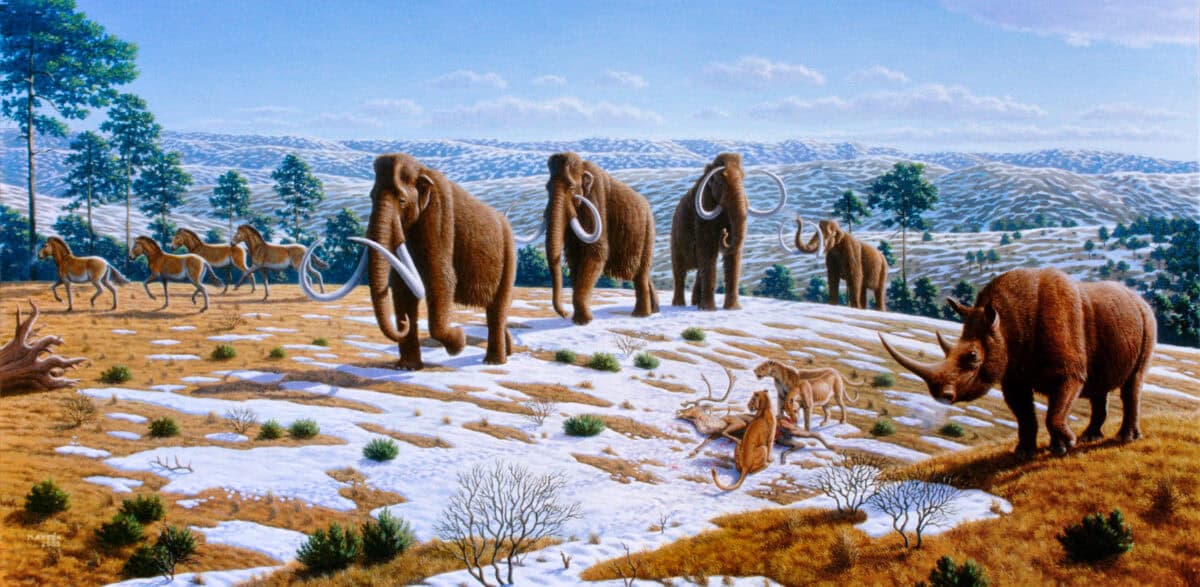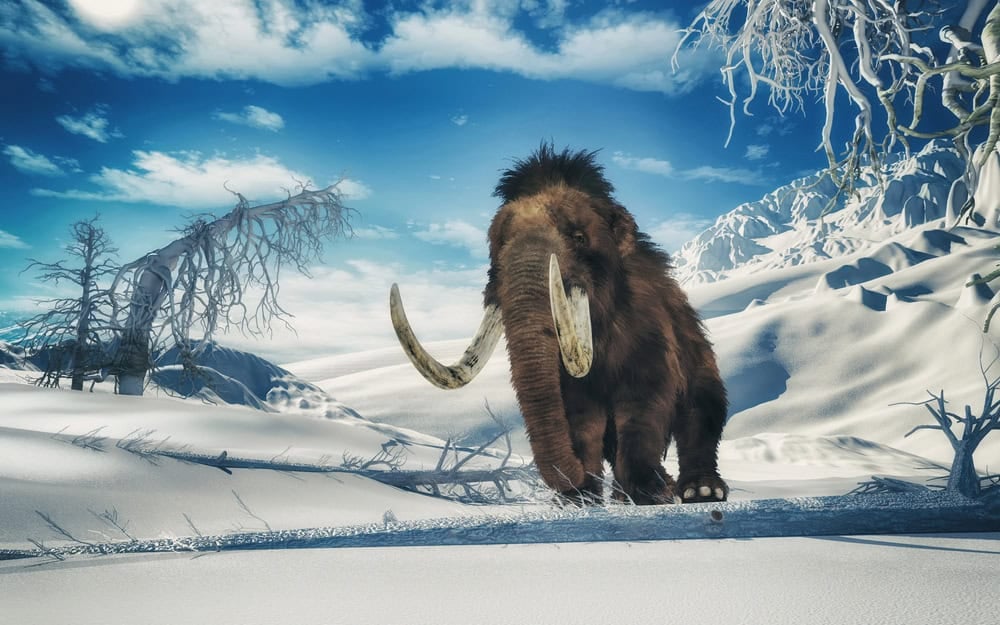The Pleistocene Epoch, often referred to as the Ice Age, was a period marked by significant climatic changes and the evolution of formidable mammals that roamed our planet thousands of years ago. These mammals, which included mammoths, saber-toothed cats, and giant ground sloths, have intrigued scientists and the public alike. Understanding their rise and eventual extinction provides valuable insights into the past and offers lessons for present-day conservation efforts.
What Was the Pleistocene Epoch?

The Pleistocene, spanning from about 2.6 million to 11,700 years ago, was characterized by repeated glacial cycles where large ice sheets covered vast regions of North America, Europe, and Asia. This geologic epoch set the stage for the adaptation and evolution of many unique mammal species. The fluctuating climate and shifting landscapes created selective pressures that shaped the fauna of the time, leading to a diverse array of large mammals known as megafauna.
Evolutionary Adaptations of Pleistocene Mammals

Pleistocene mammals exhibited fascinating adaptations to their icy environments. Woolly mammoths, for example, developed long, shaggy coats and layers of fat to insulate against the cold. Other mammals like saber-toothed cats evolved specialized teeth for hunting large prey. These evolutionary changes highlight the intricate relationship between animal physiology and environmental pressures, showcasing nature’s ability to innovate under challenging conditions.
Iconic Megafauna of the Pleistocene

When people think of the Pleistocene, images of colossal mammoths and fierce saber-toothed cats often come to mind. Mammoths once traversed the icy tundras in herds, using their massive tusks to forage through snow. Meanwhile, saber-toothed cats, with their protruding canines, were top predators that captured the imaginations of many with their prowess and power. These iconic species, among others, defined the flora and fauna of the epoch.
The Role of Climate Change

Climate change played a monumental role in shaping the Pleistocene landscape. The cycle of ice ages and interglacial periods forced many species to adapt, migrate, or face extinction. As the climate warmed at the end of the Pleistocene, habitats shifted, and isolated mammal populations struggled to survive. This dramatic alteration in the climate is a poignant reminder of how sensitive ecosystems are to environmental changes.
Human Influence on Pleistocene Extinctions

The arrival of humans in various parts of the world coincided with the decline of many Pleistocene mammals. While overhunting is a heavily debated topic, there is evidence suggesting that human activities, including hunting and habitat alteration, contributed to the extinction of several megafauna species. The intersection of human influence and natural climate change presents a complex narrative about the extinction events of the epoch.
The Legacy of the Woolly Mammoth

Perhaps one of the most fascinating Pleistocene mammals is the woolly mammoth. These majestic creatures left behind remnants of their existence in frozen tundras, inspiring numerous scientific studies. From efforts to understand their genetics to considerations of de-extinction, the woolly mammoth remains a symbol of nature’s grandeur and the enduring curiosity of mankind.
Giant Ground Sloths and Their Ecological Impact

Giant ground sloths, some reaching sizes comparable to modern elephants, played crucial roles in their ecosystems. By foraging and uprooting vegetation, they contributed to the maintenance of habitats much like modern elephants do in savannahs. Their disappearance left gaps in the ecological processes they supported, underscoring the interconnectedness of species within ecosystems.
Saber-Toothed Cats: Apex Predators of the Ice Age

With their elongated canines and robust build, saber-toothed cats were formidable hunters of the Pleistocene. They occupied an essential niche in their ecosystems, preying on large herbivores and maintaining the balance of animal populations. Their extinction highlights the vulnerabilities even apex predators face amidst environmental and ecological changes.
Adaptability and Survival Mechanisms

Mammals of the Pleistocene had to adapt to survive the cold, resource-scarce environments of the time. Many species developed unique physical and behavioral traits, such as increased fat reserves, migration patterns, and social structures, to cope with the harsh conditions. These survival mechanisms provide a window into the resilience of life and the evolutionary pressures that drive species to adapt or die.
The Enigmatic End of the Pleistocene Megafauna

The sudden decline in Pleistocene megafauna populations at the epoch’s end remains a subject of intense study. Various theories propose climate shifts, human predation, or a combination of both as factors in these extinctions. Understanding the exact reasons behind these events could offer crucial lessons regarding the balance between species and their environments.
Impact on Today’s Ecosystems and Biodiversity

The legacy of Pleistocene mammals can still be observed in modern ecosystems. Their absence has altered environmental dynamics, influencing biodiversity and ecological processes. Studying these changes helps scientists understand the long-term impacts of extinction events and encourages the development of conservation strategies to protect current vulnerable species.
Lessons for Modern Conservation Efforts

The story of Pleistocene mammals serves as a powerful reminder of the importance of preserving biodiversity in the face of climate change and human activities. By examining the rise and fall of these ancient giants, modern conservationists can draw lessons on maintaining ecological balance and preventing further loss of species. Conserving the diversity of life on Earth is crucial for sustaining the intricate webs that support all ecosystems.
Conclusion: Reflecting on a Lost World

The rise and fall of Pleistocene mammals is a compelling chapter in Earth’s history, highlighting the extraordinary adaptability and eventual vulnerability of life. These ancient animals, with their remarkable adaptations, have left a lasting imprint on our planet’s natural history. As we reflect on their existence, we bear the responsibility to apply these historical lessons to today’s conservation challenges, ensuring that the story of life on Earth continues to thrive.
- 24 Secret Ideas That Attract Hummingbirds to Your Garden - August 14, 2025
- The Fastest Land Animals in the US - August 14, 2025
- What Makes the Indo-Pacific Humpback Dolphin Rare and Vulnerable - August 14, 2025
